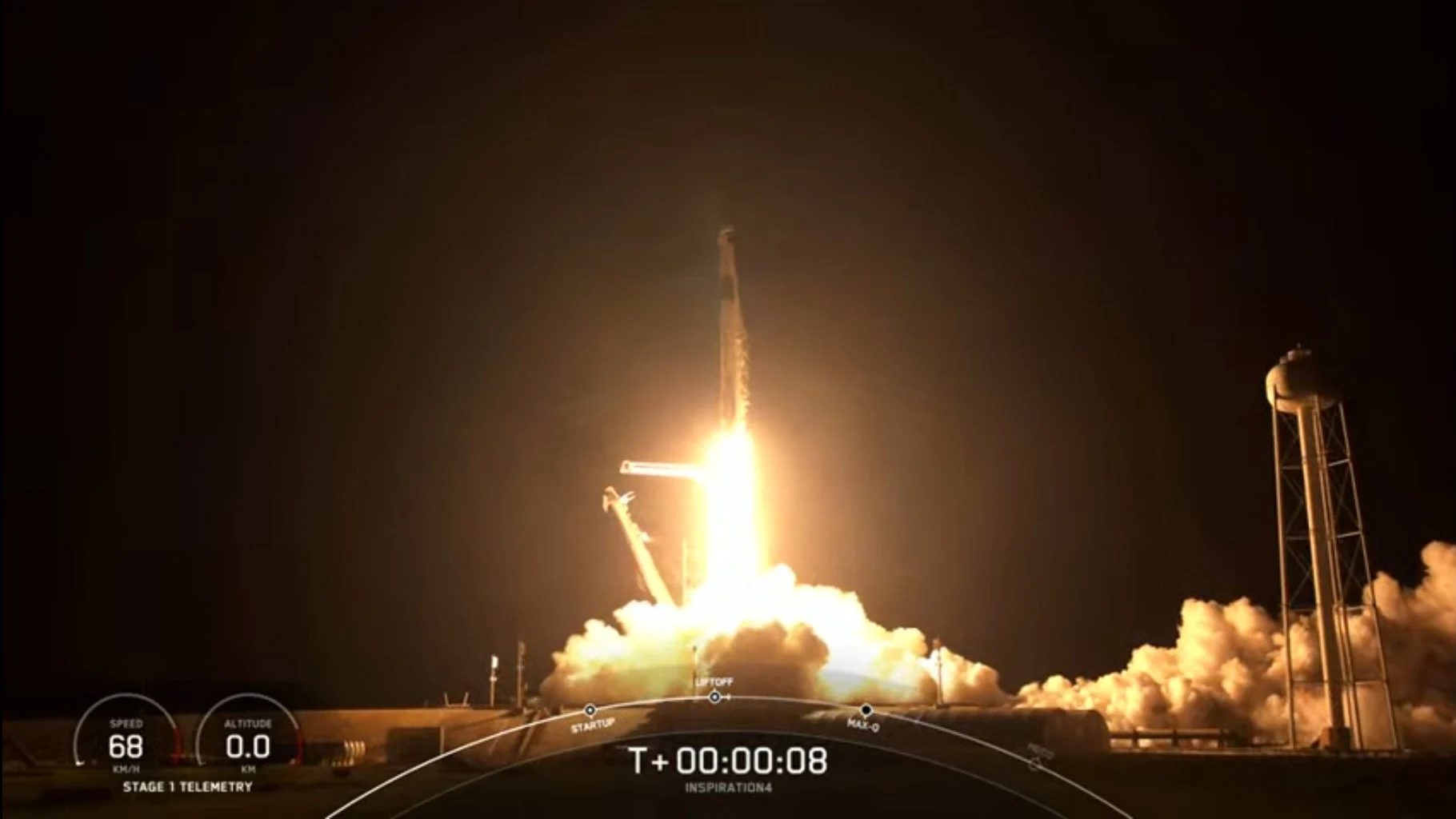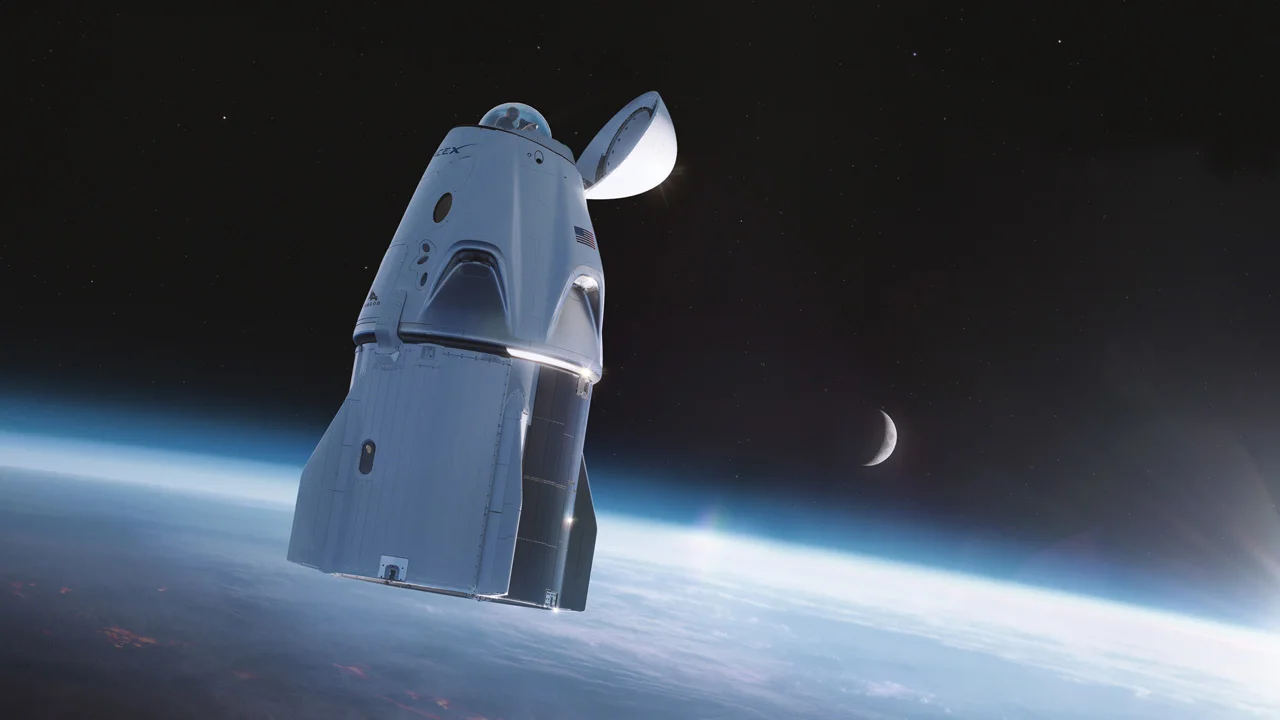
Inspiration4 successfully launches on first all-amateur orbital space flight
Now in orbit, the four-person crew will spend three days there to raise money for St. Jude Children's Hospital, and to inspire us all to reach for space.
SpaceX's Inspiration4 crew has now made space history.
Lifting off on Wednesday night from Cape Canaveral, the Inspiration4 crew — Jared Isaacman, Dr. Sian Proctor, Hayley Arceneaux, and Chris Sembroski — is now the first all-civilian American orbital space mission. After launching from Kennedy Space Center's historic Launch Complex 39A, at 8:03 p.m. EDT on September 15, 2021, these four newly-minted astronauts will be spending the next three days circling our planet.
Ferrying them on this mission is a unique SpaceX Dragon spacecraft. This is the second flight for this particular Dragon, named Resilience. It is the same spacecraft that delivered NASA astronauts to the International Space Station during the Crew-1 mission in November 2020. Still, it has undergone some special modifications for this trip.

Crew Dragon Resilience sits atop its Falcon 9 booster at Launch Complex 39A in the days before the launch. Credit: SpaceX
Unlike previous Dragon models, which were outfitted specifically to deliver cargo and/or crew to the ISS, this one has a different flight plan in store. The capsule is only intended to launch, orbit the Earth for three days, and then return to splash-down.
So, rather than having the standard docking port, there's something completely new under the nosecone. The docking port has been replaced with a three-layer observation dome known as the cupola.

This artist's rendition of the Inspiration4 Crew Dragon in orbit reveals the observation dome on the top of the capsule. Credit: SpaceX
According to SpaceX, this dome is the largest contiguous space window ever flown.
It provides views of our planet like this:
Another somewhat unique aspect of this mission is that there was no instantaneous launch window. When Cargo Dragon and other Crew Dragon spacecraft reach T-zero for their launch, they must launch at precisely that moment to be on the right trajectory to catch up to the orbital lab and dock there. If they can't launch at that exact moment, the attempt must be postponed for another day.
In this case, the Inspiration4 crew was not on such a tight schedule. Thus SpaceX has planned a five-hour window for the launch, with four launch opportunities in that window. Thus, if conditions had not been perfect right when the launch window opened, this would have given them some leeway to launch later if necessary.
COOPERATIVE WEATHER
The weather was perfect for the launch!
As of Wednesday morning, the 45th Weather Squadron, stationed at Patrick Space Force Base, issued a weather forecast with a 90 per cent chance of favourable weather for liftoff.
"The primary launch weather concerns are Flight Through Precipitation with coastal showers and the Anvil Cloud Rule associated with inland storms," they wrote. These favourable conditions held for the rest of the day, allowing the mission to lift off right on time.
Read More: TDIWH - November 14, 1969 - Apollo 12 struck by lightning
Good weather is crucial for a space launch. Nearly 52 years ago, the Apollo 12 mission suffered two lightning strikes on the rocket that almost ended their flight to the Moon.
These days, there are strict guidelines for weather conditions leading up to a space launch. Several Lightning Launch Commit Criteria (LLCC) are considered for a launch weather forecast. These are all conditions in the vicinity of the launch platform that indicate natural lightning-producing storms or conditions favourable for the rocket launch to trigger a lightning strike.

Credit: U.S. Space Force 45th Weather Squadron
The weather also matters at the splashdown zones the mission will be using, which are located off the coast of Florida. Forecasters have had to look out over the three day mission, to evaluate the weather at those locations for the mission's end. So far, the weather looks great.
Watch it again: SpaceX presents launch coverage of Inspiration4 (liftoff is at 4:17:25 of the stream)
THE INSPIRATION4 FLIGHT
This spaceflight is unlike any that anyone has taken in recent history.
According to SpaceX, their spacecraft is bound for a roughly three-day orbit of the Earth. Flying at 575 kilometres above the surface, the Inspiration4 crew will be around 100 kilometres higher than any astronauts on the International Space Station.
Several previous space missions have flown higher than Inspiration4, of course, even if you don't count the Apollo missions to the Moon. As astronomer Jonathan McDowell pointed out in a thread on Twitter, the Gemini 10 and 11 astronauts went higher (763 km and 1373 km, respectively). Also, the space shuttle missions to deploy and service the Hubble Space Telescope from 1990 to 2002, and to deploy NASA's Upper Atmosphere Research Satellite (UARS) in 1991, all went higher as well.
Still, Inspiration4 are flying higher than any mission in nearly two decades. That has to count for something!
Travelling at over 27,000 km/h, their spacecraft will now circle the planet once every 96 minutes. This will provide them with 15 sunsets and sunrises, each day they're in space. Although they are scheduled for a three-day mission, the Dragon is outfitted to stay in orbit for up to a week.
In their official roles, Isaacman is acting as mission commander, Dr. Proctor is the flight pilot, Arceneaux is the medical officer, and Sembroski is the mission specialist.
Their ultimate goal with this mission is to raise $200 million for St. Jude Children's Research Hospital. Isaacman has already committed $100 million to the cause, and the campaign has already raised over $31.3 million towards covering the other half. To help raise the rest, they are carrying to space several unique or historic objects which will be auctioned off, with the proceeds going to St. Jude.
These items include unique NFT artwork (and a newly minted NFT song by rock band Kings of Leon), "Space Racers" STEM toys, an astronaut plushie, mission jackets, watches, writing instruments and stationery, and more. They are even flying 66 pounds of hops into space that brewer Samuel Adams will use to "brew an out-of-this-world beer."
"One of the key things we've focused on since Inspiration4 was first announced was how we will be able to make a significant contribution to help St. Jude cure childhood cancer here on Earth," Isaacman, the CEO of Shift4 Payments and commander of Inspiration4, said in a press release last week. "Every item we are bringing is going to help us reach our goal and allow us to share this experience with so many others who want to offer support."
They won't be idle while orbiting Earth, though. While they are taking in the scenery and no doubt providing us with examples of their amazing view, they will be performing various biomedical science experiments while in space. These will further what we know about how microgravity and space travel affect the human body. The data they collect may even help in the discovery of new treatments, or even cures, for ailments suffered by those here on Earth.
Stand by for more updates, as they come in!
Editor's note: A previous version of this article called Inspiration4 "the first all-civilian mission," however the first all-civilian crew actually launched to the ISS on the Soyuz TMA-3 mission in 2003 (h/t to Dr. McDowell). It would be more correct to call this new mission "the first all-civilian American orbital mission" or "the first all-amateur orbital space flight", so the article now reflects this updated phrasing.
